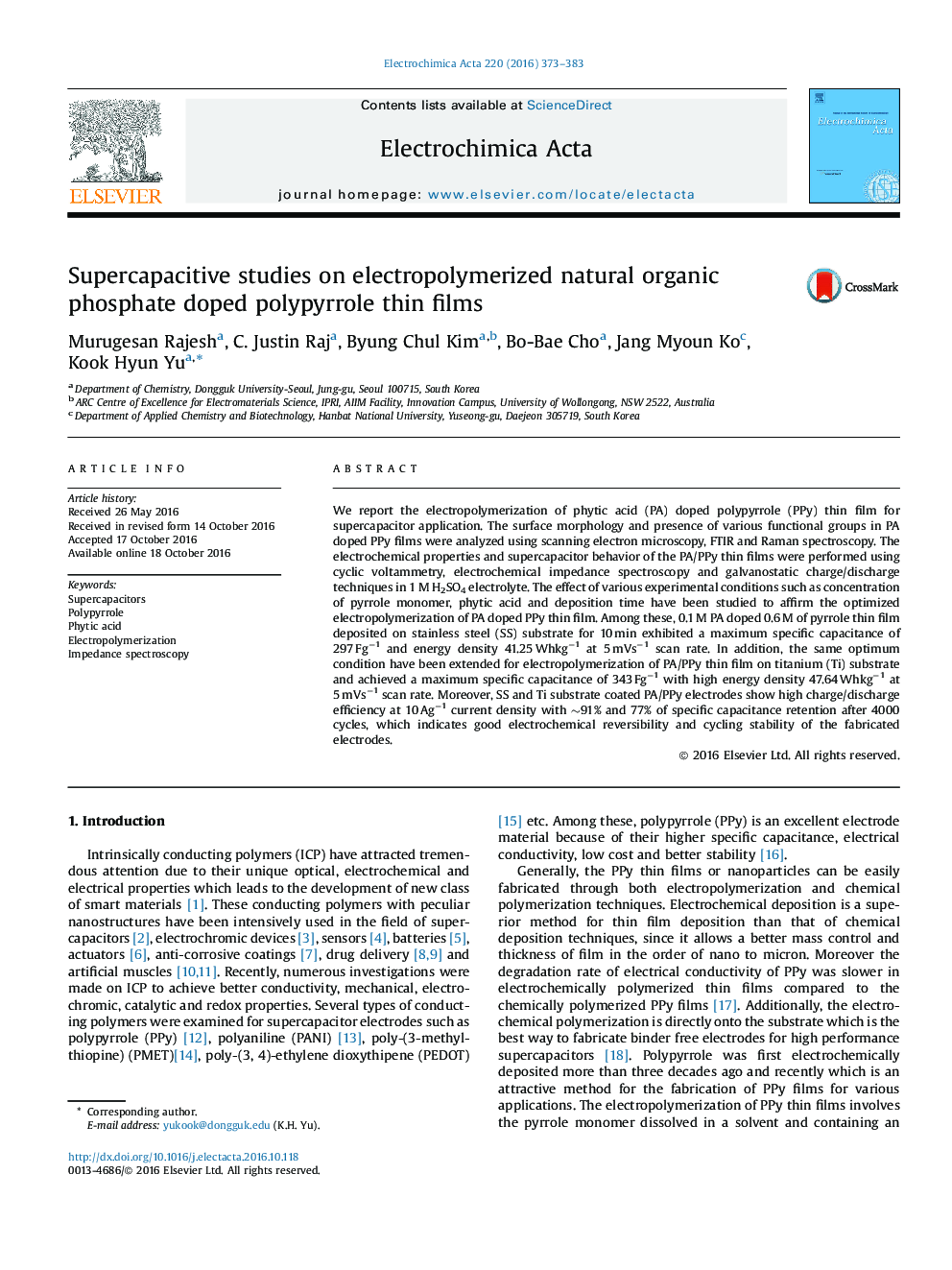| Article ID | Journal | Published Year | Pages | File Type |
|---|---|---|---|---|
| 6472359 | Electrochimica Acta | 2016 | 11 Pages |
â¢Phytic acid doped polypyrrole thin films were deposited by electropolymerization.â¢The best optimized electropolymerization of PA doped PPy was investigated.â¢The films showed an excellent supercapacitive performance in both SS and Ti substrates.â¢PA/PPy electrodes exhibited high charge/discharge efficiency and better capacitance retention.
We report the electropolymerization of phytic acid (PA) doped polypyrrole (PPy) thin film for supercapacitor application. The surface morphology and presence of various functional groups in PA doped PPy films were analyzed using scanning electron microscopy, FTIR and Raman spectroscopy. The electrochemical properties and supercapacitor behavior of the PA/PPy thin films were performed using cyclic voltammetry, electrochemical impedance spectroscopy and galvanostatic charge/discharge techniques in 1Â M H2SO4 electrolyte. The effect of various experimental conditions such as concentration of pyrrole monomer, phytic acid and deposition time have been studied to affirm the optimized electropolymerization of PA doped PPy thin film. Among these, 0.1Â M PA doped 0.6Â M of pyrrole thin film deposited on stainless steel (SS) substrate for 10Â min exhibited a maximum specific capacitance of 297Â Fgâ1 and energy density 41.25Â Whkgâ1 at 5Â mVsâ1 scan rate. In addition, the same optimum condition have been extended for electropolymerization of PA/PPy thin film on titanium (Ti) substrate and achieved a maximum specific capacitance of 343Â Fgâ1 with high energy density 47.64Â Whkgâ1 at 5Â mVsâ1 scan rate. Moreover, SS and Ti substrate coated PA/PPy electrodes show high charge/discharge efficiency at 10Â Agâ1 current density with â¼91% and 77% of specific capacitance retention after 4000 cycles, which indicates good electrochemical reversibility and cycling stability of the fabricated electrodes.
Graphical abstractDownload high-res image (159KB)Download full-size image
